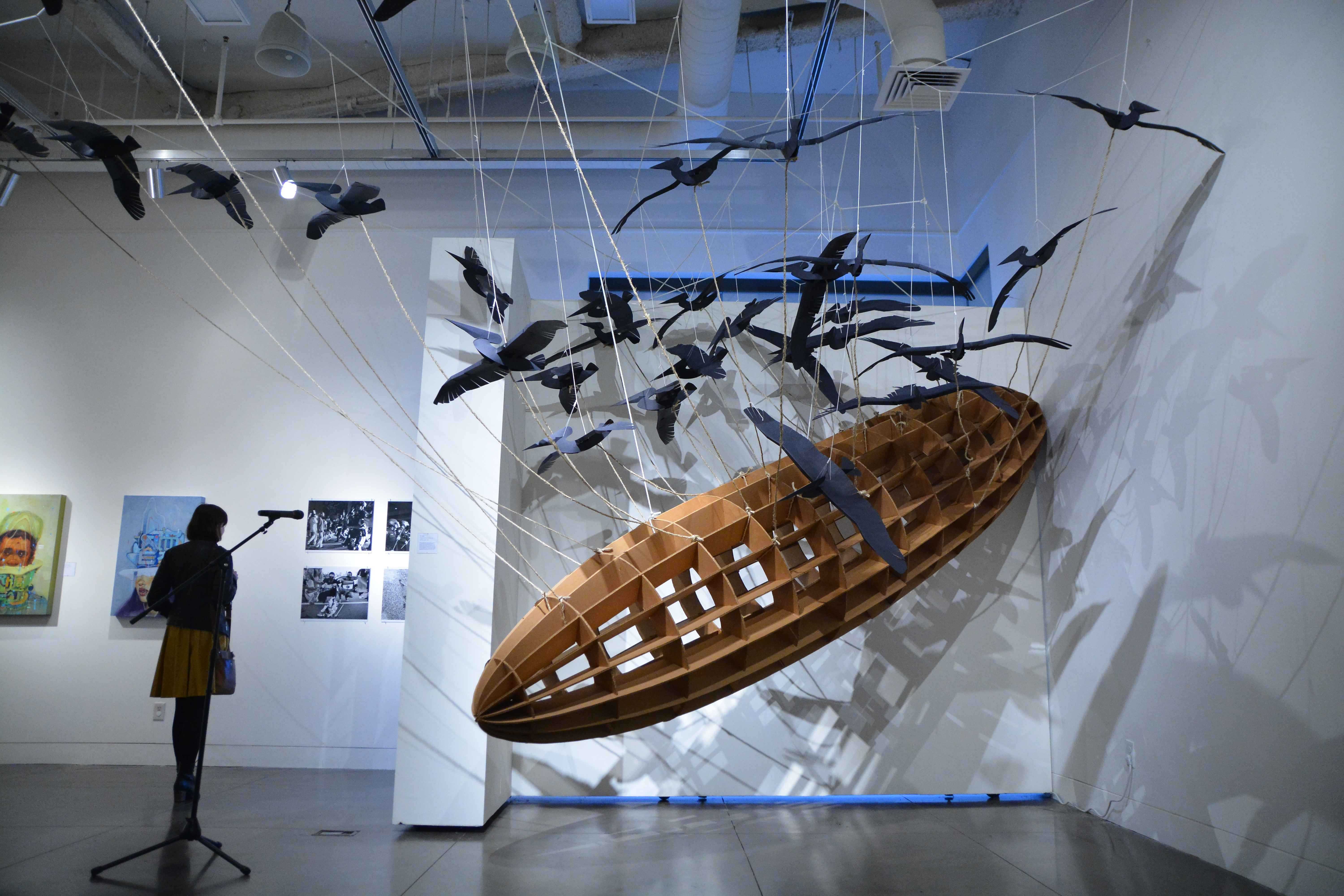Taro Hattori’s “Where do birds go to die? II.” Photo by Adrian Discipulo. Taro Hattori said the crows carrying the structure suggest the masses on both the left and the right of the political spectrum are fuelling the chaos. “We see them as the mob while we we are becoming the mob,” Hattori said. “It is, from time to time, so difficult to simply stop and think about where we are going, what we are carrying and who we really are when we say ‘we.’” Argabrite said the piece was more abstract than the others. “There is a sense of chaos and discomfort. The cardboard shape could represent missiles, patriarchy, capitalism … point is it’s going down.”

